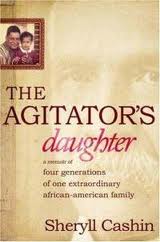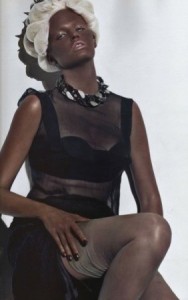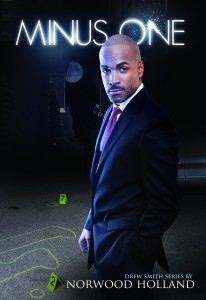The Price of Passion: A Review of The Agitator’s Daughter
July 29, 2011
 John Cashin’s death in March has renewed interest in Sheryll Cashin’s 2008 memoir The Agitator’s Daughter. It is the story of her father’s political fortune, his rise and fall and the price of passion as told by a precocious daughter coming of age in Huntsville Alabama during the height of the civil rights movement. She shares how family wealth dissipated with the moderate success of John Cashin’s political commitment. In the early 70s as a student at Fisk University I had the opportunity to hear Dr. Cashin speak. At the time uninterested in his subject, politics, I remember being struck by his energy. He had an almost larger than life presence, confident, boastful and driven. Sheryll Cashin’s story bears out this impression.
John Cashin’s death in March has renewed interest in Sheryll Cashin’s 2008 memoir The Agitator’s Daughter. It is the story of her father’s political fortune, his rise and fall and the price of passion as told by a precocious daughter coming of age in Huntsville Alabama during the height of the civil rights movement. She shares how family wealth dissipated with the moderate success of John Cashin’s political commitment. In the early 70s as a student at Fisk University I had the opportunity to hear Dr. Cashin speak. At the time uninterested in his subject, politics, I remember being struck by his energy. He had an almost larger than life presence, confident, boastful and driven. Sheryll Cashin’s story bears out this impression.
John Cashin and brother, Herschel, during their Omega partying days at Fisk made a pledge to continue the work of their great grandfather Herschel V. Cashin a radical Republican legislator in Reconstruction Alabama. The legislator’s political career like most African American office holders ended with Reconstruction and the disenfranchisement of African Americans sweeping the South. Brother Herschel studied law unable to earn a living in Alabama when the State enacted Jim Crow legislation depriving those studying out of state the right to practice leaving John Cashin alone to fulfill their fraternal pledge.
John Cashin became a dentist joining his father in a successful Huntsville Alabama practice. After military service and a tour in France he would return home to finish grand father Herschel’s work founding the National Democratic Party of Alabama in 1968. The Party became a prominent voice for Black voting rights and an important player in local politics in Black-dominated communities. It began the process of dismantling the segregationist chokehold on Alabama’s political process.
The Party in the name of Black voting rights would enjoy successes and suffer defeats until its demise in 1976 at a time when John Cashin’s reversal of fortune and personal calamities would mount. Sheryll Cashin laments the price her father paid for his commitment. A bitterness evolves to acceptance enabling the Georgetown law professor to no less carry on a family tradition of service and good works. Her memoir is an inspiring historical account delving into morality and the price of passion.
Diversity and Tolerance
September 18, 2010
Many believed the election of an African American President ushered in the new age of a post racial American society, one of diversity and tolerance with global impact. Well into Obama’s first term we have witnessed anything but tolerance and acceptance of cultural, racial and religious differences. Unfortunately society’s ingrained prejudices will likely take generations to eradicate. It took 400 years to make racial equality a matter of policy in the United States. A major battle tackling racism came on the education front with the 1954 Brown decision outlawing segregated schools eliminating an impediment to economic progress for many and making great strides in American society. Through desegregation school kids actually experienced diversity and tolerance in their everyday lives. Mere association alone cannot remove entrenched ideology in the war on racism and xenophobia, but the education battlefront remains the best theatre. Teaching tolerance and diversity as part of the curriculum has proven to be an effective strategy in targeting early childhood development. Teaching tolerance in elementary schools reduces the incidence of hate crimes, racism, discrimination and bigotry.
Similarly on the march of progress religious intolerance remains another battlefront. How do we educate the public to understand and respect the various religions of the world? The Establishment Clause of the First Amendment prohibits the establishment of a national religion by the Congress or the preference of one religion over another, and at the same time insuring religious freedom. It further outlaws teaching religion or what is known as “excessive entanglement” in the public schools. Public schools did much to eradicate racial discrimination but as for religious instruction there is a laissez-faire policy. When it comes to educating the public the society’s youth remains the better students. By adulthood bias and prejudice become entrenched and are less likely to be questioned.
In 1992, the American Bar Association’s Young Lawyers Division (YLD) launched four Tolerance Education pilot projects in elementary schools, middle schools, high schools, and colleges throughout the country. The ABA offered a Strategy for Teaching Diversity and Tolerance in schools recognizing children are aware of racial and gender differences at a very young age, and by age twelve they have formed stereotypes. In fact, recent studies show that tolerance education is most effective between the ages of four and nine years. Therefore, it is important to teach tolerance to young children and continue reinforcing the message over time. Age-appropriateness is involved in the creation of the different curricula that educators have developed. For instance, part of the curriculum includes classroom exercises from newsletters and newspaper sections directed toward younger audiences. Additional methods include short theatrical productions and role-playing exercises. Such programs give students a greater understanding of discrimination and prejudice.
Why not incorporate Diversity and Tolerance as part of a civics curriculum nationwide? Granted, States like Texas where political ideology controls curriculum would probably oppose it. Nevertheless its certain, diversity builds a stronger society, tolerance advances democracy, and compassion is essential for a better world.
Fashion’s Lack of Diversity
June 19, 2010
The lack of minority input was apparent when French Vogue’s October cover sported a white model in blackface—and to add insult to injury the entire magazine layout failed to include a single non-white model. At a time of the declining print media this was Vogue’s mad attempt to grab publicity and sell magazines regardless of political correctness. This sort of in your face racism is generally expected from the French.
In the U.S. the same disregard was aired on Project Runway when Emile Sosa a Black Dominican born New Yorker won weekly competition after competition only to lose the coveted grand prize to the lack luster performance of Seth Aaron Henderson, a white male. The reason given was that Sosa produced a line while Henderson produced a collection. If I understand the difference correctly, a collection is a designer’s creation for a single season meant to be more edgy and artistic while a line reflects a longer lasting commercial appeal. I thought it was about whoever produced the best work of redeeming quality. Reviewing past competitions evidence suggests line vs. collection became a new standard. Rather than give the Black designer the award the all white judges simply moved the goal post.
As for the dearth of diversity in print, Fashion editors claim their backs are against the wall, with their magazine’s sole income dependent on advertisers their decisions are based on advertiser preferences. It’s all business nothing personal or racist. The fear of low sales and advertisers pulling back prevents editors from putting dark-skinned models or celebrities on the covers of fashion/women’s magazines (which are mostly Caucasian owned). When ethnic consumers quit patronizing these advertisers then what? This same specious argument was used by Southern businessmen to oppose integration during the civil rights movement. Hindsight has shown by opening the doors of opportunity and embracing all, it enhances a business’s goodwill as well as its bottom line.
It all comes down to the personal taste of editors who wield an awful lot of power in the industry (remember the Devil Wears Prada). Now is the time for consumers to exercise their power. If fashion’s print media is to thrive and reverse the decline in readership it needs to become more relevant and by that more inclusive. It can only do so by recruiting more minority editors and writers, Blacks, Latinos, and Asians who are as acutely aware of their own ethnic aesthetic as they are the Anglo-American.
And minority consumers can make their preference known by insisting that industry giants the likes of Vogue, Marie Claire, Elle, Bazaar and Glamour begin to recruit minority editors and writers. Consumers can further demand the Council of Fashion Designers in American become more accountable and step up its efforts to bring diversity to the industry. A minority presence would put an end to stunts like Vogue’s black face.
Sanford Roan’s First Round for Diversity
May 7, 2010
In 1939 Sanford Roan made several attempts to integrate the Ohio Highway Patrol. The first African-American applicant brought superior credentials, a graduate of North Carolina A&T with a business degree. He was a star athlete and later a trained pilot with military service. John Bricker an ambitious Ohio gubernatorial candidate urged Roan’s application suggesting the State was eager for an African American patrolman. In a ploy to capture the Black vote Roan unwittingly became a political pawn in Bricker’s election bid.
Ostracized throughout cadet training Roan coped with the humiliating and hostile environment as he would later express to President Roosevelt: “The boys when they would talk to me would make sure no one else was around to see them. Generally, they expressed their sympathy at the conditions, but said there was nothing they could do. I began to realize then that a business or an organization could only be as good as the person or persons controlling them.”
A popular athlete Roan attended a racially mixed high school. Graduating from college into the world of work his race made him a social outcast. Fed up with the treatment he quit the academy. Bricker promptly summoned him and with promises of support and assurances of being in his corner, Roan was persuaded to return. But thing’s grew worse, and again he quit. By then Roan’s difficulties became front page fodder closely followed by Ohio voters. Again in his persuasion this time Bricker promised a political appointment if Roan would only return until after the election. All the while Bricker’s cohort, the Ohio Highway Patrol department’s founder Colonel Lynn Black was determined to keep the force all white and set out to block Roan’s appointment. With a wink and nod from Colonel Black the “Jim Crow” treatment grew more intense. In what was to be routine sparring Roan stepped into a boxing ring surprised in the opposite corner as five white cadets filed in.
Bandaged and brutally beaten Roan submitted his final resignation. The sitting democratic Governor Martin L. Davey promised if re-elected to fire Colonel Black. Bricker promised an investigation. Both candidates only intended to energize the Black vote. Bricker won but his promise for change, an investigation, and a political appointment were quickly forgotten. Roan’s ambition of being a highway patrolman faded.
Bricker too in his ambition would also suffer defeat. The Republican nominee for Vice President of the United States in 1944 shared the unsuccessful ticket with Presidential nominee Thomas Dewey losing to Franklin Roosevelt. Roan might have found some solace in Bricker’s defeat but then Bricker served out his public life in the U.S. Senate. Sanford Roan, the father of Kay and Gary, went on to become a successful businessman in Columbus Ohio.
Sanford Roan was one of those rare men, a courageous pioneer who cleared a path for others. Because of men like Roan who stepped up to a challenge the struggle is no longer about fisticuffs, but continues in the greater goal for diversity. Local Human Rights Commissions now work side-by-side with police departments to overcome past wounds and to open new dialogue towards an inclusive future for all our citizens. Police forces now actively recruit from HBCUs. Sanford Roan’s story clearly illustrates the difficulties of getting to this point.





